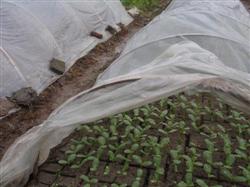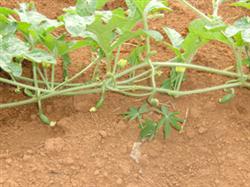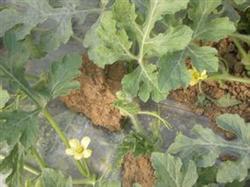Key measures for raising watermelon seedlings in winter

In order to improve the heat preservation and heating measures of the seedling shed, the heat preservation and non-performance can be greatly improved by using polycyanoethylene non-dripping film instead of polyethylene film, and the greenhouse temperature can be increased by 1-2 degrees. Temporary heating equipment such as fire wall or heating furnace should be installed in the shed. Artificial warming should be carried out when necessary. The main results are as follows: 1. Watermelon and rootstock seeds were treated at low temperature to enhance the cold resistance of seedlings. The seeds to be germinated after soaking were placed in a freezing environment of about 0 degrees for 24 hours, and then germinated under suitable temperature conditions. When the seeds are white, treat them with-1 degree for 12-18 hours a day. Transfer to 18 degrees treatment for 12-6 hours, a total of 3-5 days, and then the parties in the appropriate temperature conditions to promote germination. 2. Strengthen the management after grafting: keep the temperature of the greenhouse at the stage of wound healing at 20-30 degrees within 1 week after grafting. Artificial warming should be carried out when the night is below 18 degrees, and the grafting seedling bed should be strictly sealed for 3-6 days, keeping the relative temperature in the bed 100%, shading completely in the first 3 days, only passing through weak scattered light, gradually seeing light on the 4th day, and gradually ventilating after 6 days. remove the shade and increase ventilation after the 7th day. Make the grafted seedlings adapt to the normal seedling bed environment. 3. Strengthen the management of disastrous weather: the management of severe weather such as continuous overcast, rain and snow, strong cold current and so on is an important link in the success or failure of seedling breeding. Pay attention to listen to the weather forecast and take measures to keep warm before the cold spell. In times of rain and snow, two layers of film must be covered with grass grass. In continuous cloudy days, increase the light as much as possible without freezing damage. If the bed temperature drops after uncovering, the grass should be opened and covered before 3 p.m. If the bed temperature drops slightly, it can be covered with the cover. Do not not uncover for a few days, when there is rain and snow, cover the grass with the break between the rain and snow. If the light is insufficient for a long time, you can use fluorescent lamps to make up the light manually. After a long overcast, the uncovering should be carried out slowly, otherwise it is easy to cause flashing seedlings or even falling seedlings. If the seedlings are found to be withered, they should be covered with shade immediately, and then uncover after the melon seedlings return to normal. Repeat this several times until it doesn't wither. Then uncover all the grass grass, and then enter the normal management. 4. 7-10 days before planting, increase ventilation, cool down and refine seedlings: 15-20 degrees during the day, within the limit of no freezing damage to melon seedlings, the night temperature can be reduced to 8-10 degrees, so that melon seedlings can adapt to the environmental conditions after planting. 5. In the cultivation of overwintering harvest, the price before New Year's Day and before the Spring Festival is the highest, so we should concentrate on harvesting at these two times as far as possible, but we should also pay attention to timely harvest, avoid harvest too late, pods aging, and reduce the quality of standing products.
- Prev

Three elements of watermelon flower and fruit protection in high temperature and rainy season
The hot and rainy season is a test for most crops, and watermelon is no exception. In this weather, what we mainly do is how to protect flowers and fruits and improve fruit setting rate and watermelon yield. Mainly from three aspects of protection: factor 1, cultivation and management in the greenhouse 1, high temperature in summer.
- Next

"five looks" to distinguish whether watermelons are sitting or not
The ovary of precocious watermelon is generally round (a few are oblong), and the female flowers with few hairs, thick and long fruit stalk and large petals are easy to sit on watermelon. Fruit-shaped oval melons (mostly mid-late ripening varieties), ovaries are oblong, hairy, fruit stalks thick and long, petals large female flowers easy to sit melon; the reverse is not easy.
Related
- Moge, come on! The staff of the peasant association in the producing area of cantaloupe were frightened when the crowd gathered.
- Causes and Solutions of low Fruit setting rate of Apple
- Symptoms and control measures of passion fruit virus disease
- Fruit growing lesson: how do apple orchards keep high yields?
- Can you build orchards in the mountains? What are the pros and cons?
- How to manage the coloring period of Crisson grape?
- This paper introduces the processing technology of two kinds of fig products.
- How much is a month for retired teachers in rural areas by 2020?
- How can strawberry planting increase sugar content? We should pay attention to management in many aspects.
- What are the cultivation techniques on how to improve the yield of golden fruit?

